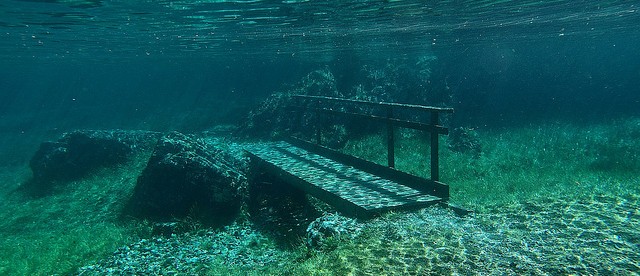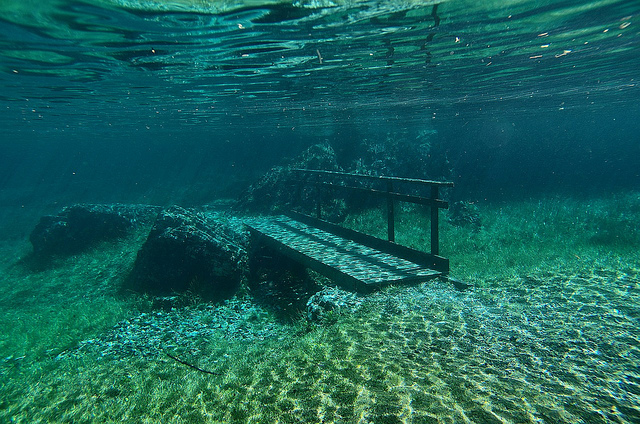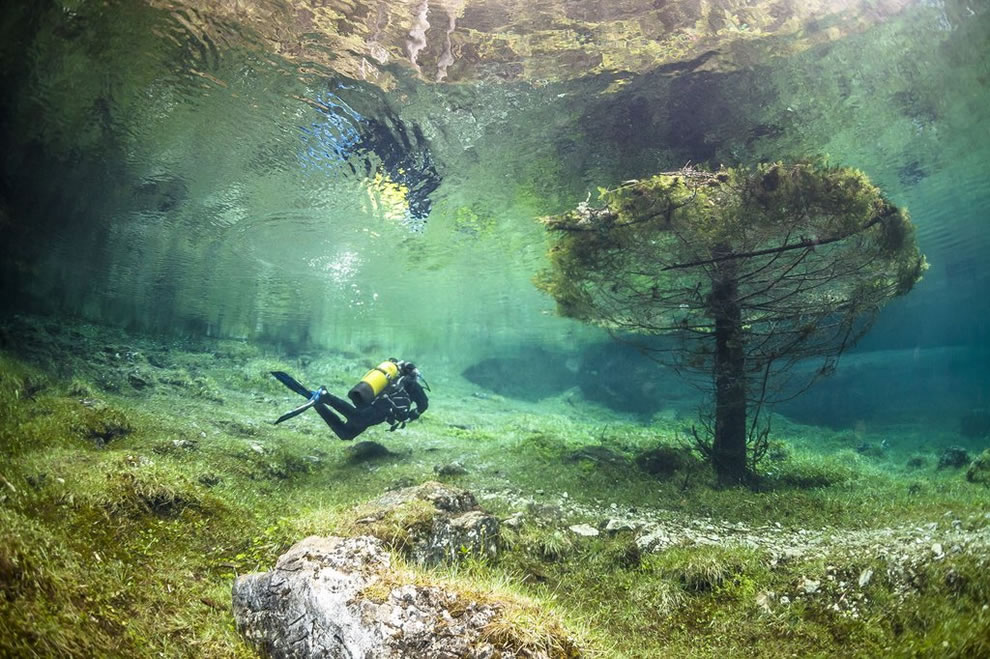The Park at the Bottom of the Lake


The image above (via) is of a bridge, and not a very good one at that. While it appears to transverse a tiny chasm, the entire effort is rendered moot by the fact that the bridge itself is underwater, and by a few feet at that. It’s a pretty silly excuse for a bridge.
But that’s only because the picture was taken in May. If we had a picture of that same bridge say, about now, it’d be doing its job just fine — you could walk over it, as intended, without needing swim lessons
The lake pictured above is called Grüner See (literally “Green Lake”) located in central Austria. It’s surrounded by an evergreen forest enclosed by a mountain range. During the winter, the lake is pretty shallow, only reaching a depth of about five feet (1.5 meters) at its deepest point, with a tiny circumference. The shore of the lake makes for a great place to camp out and hike, and there are benches and footpaths and, yes, little bridges over some of the bumpier terrain, such as the one above. For area residents or for those in the know, Grüner See is a great place to spend some time walking around outdoors.
Until spring, that is. When the warm weather comes, something magical happens: the snow melts. Not just the snow on the ground, either, but the snow on the mountains. That water runs into Grüner See, creating an experience like the one above and, for those who wish to scuba dive, the one below (via).

It’s the same park — same trees, same benches, same footpaths — but now, instead of on the shore of a five-foot deep lake, it’s on the bottom of a 40-foot (12m) deep one. The experience is a weird and perhaps unique one; as Atlas Obscura explains, “fish swim around park benches and swimmers float over bridges,” and “the bottom is covered in grass, giving much of the lake a green hue” (hence the name).
Unfortunately, a dive like this may be one which you can no longer experience. In 2015, the lake’s popularity among divers became too much for its ground to handle, and experts believed that continued use would lead to loose sediment and, ultimately, the end of the lake’s green hue. As a result, as of 2016, scuba diving is prohibited. For those who missed out, more pictures can be found here.
Bonus fact: The word “scuba” stands for “self-contained underwater breathing apparatus,” which is to say that it’s an acronym. So why isn’t it capitalized? Basically — and this is pretty circular reasoning — it lost its acronym status when people forgot that it was one in the first place. Really. As Grammarist notes, it’s become something sometimes called an “anacronym” — that’s a portmanteau of “anachronism” and “acronym” — which is “an acronym made of the initial letters of the words in a phrase that create a new word that is pronounceable, however, the original words that made up that acronym are unknown or forgotten by most people.” There are a few others, too, most notably “laser” (“Light Amplification by Stimulated Emission of Radiation”) and “radar” (“RAdio Detection And Ranging”).
From the Archives: A Lake with a Leak: Basically the opposite of today’s story, but the change occurs much, much more suddenly.
